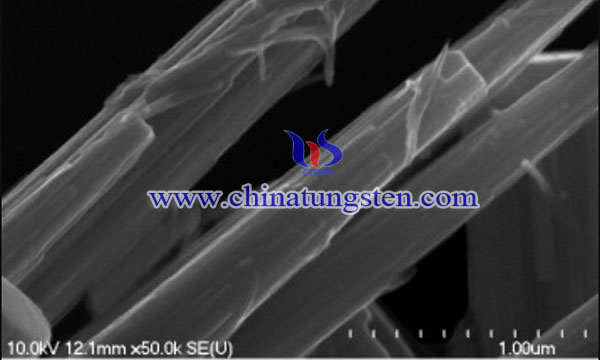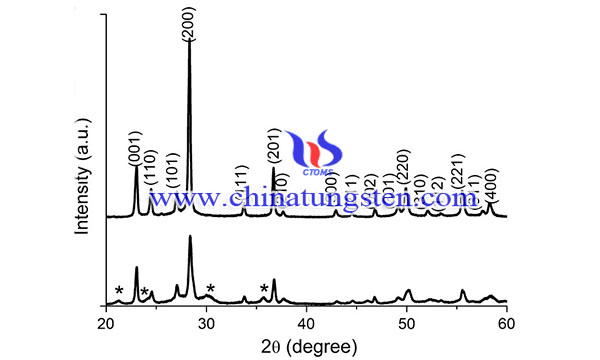Synthesis of Tungsten Trioxide Nanowires and Doping with Metals
- Details
- Category: Tungsten Information
- Published on Saturday, 18 September 2021 21:33
Tungsten trioxide (WO3) is an n-type semiconductor oxide that possesses a large bandgap in the range of 2.6–3.0 eV and has the potential for a variety of applications such as electrochemical devices, photovoltaic devices, photocatalytic devices, electrochromic devices, dye-sensitized solar cells, optical devices, field-emission displays, and gas sensors. Meanwhile, with the development of one-dimensional nanostructures, dimensionality and size of the materials have also been regarded as critical factors that may bring some novel and unexpected properties.

Thus, the hexagonal form of tungsten trioxide (h-WO3) is of great interest due to its well-known tunnel structure. The synthesis of tungsten trioxide nanowires is achieved by the hydrothermal route, and the doping of these nanowires with metal nanoparticles is conducted via wet impregnation. The synthesis of hexagonal tungsten trioxide nanowires is as below:

Raw materials
Sodium-tungstate and sodium sulphate was purchased from Reanal, hydrochloric acid solution (concentrated), acetone, and ethanol from Merck, silver-nitrate, gold-chloride, diamminedichloropalladium, tetraamineplatinum nitrate and nickel acetylacetonate from Sigma–Aldrich. And also deionized water was used. All the chemicals were analytical grade and they were used without any purification.
1. Synthesis of WO3 nanowires
Sodium-tungstate (2.5 g) and sodium-sulfate (3.0 g) were dissolved in distilled water (80 ml). Hydrochloric acid (3 M) was added dropwise to the clear solution under continuous stirring, the pH of the solution was set to 1.5. After 10 min of stirring the mixture was transferred into a Teflon-lined stainless steel autoclave and was kept at 180 °C for 48 h. The product was collected by centrifugation and washed with distilled water and ethanol and dried at 60 °C in air.
2. Doping of metals on WO3 nanowires
The earlier synthesized nanowires were suspended in the mixture of ethanol and acetone (1:1) using ultrasonication. To this suspension the appropriate amount of metal salt (silver-nitrate, gold-chloride, diamminedichloropalladium, tetraamineplatinum nitrate, and nickel acetylacetonate) was added to get 1% (compared to the mass of the nanowires) metal content on the surface. After 12 h stirring the solvent was evaporated and the product was dried at 80 °C followed by a heat treatment at 300 °C in air and a reduction step at 350 °C in N2/H2 atmosphere.
In summary, tungsten trioxide nanowires are synthesized by the hydrothermal route, and the doping of these nanowires with metal nanoparticles is conducted via wet impregnation. The synthesis of hexagonal tungsten trioxide nanowires and the nanowire/metal nanoparticle composites was successful. The results reveal that the prepared tungsten trioxide samples consist of bundles of individual nanowires and that the nanoparticles cover the surface. The dispersity and homogeneity of the nanowire/nanoparticle composites are the best in the case of the nickel and platinum decorated wires. Band gaps were calculated from UV–Vis spectra.
- Tungsten Oxide Manufacturer & Supplier, Chinatungsten Online: www.tungsten-oxide.com
- Tungsten News & Prices of China Tungsten Industry Association: www.ctia.com.cn
- Molybdenum News & Price: news.molybdenum.com.cn
- Tel.: 86 592 5129696; Fax: 86 592 5129797; Email: sales@chinatungsten.com



 sales@chinatungsten.com
sales@chinatungsten.com